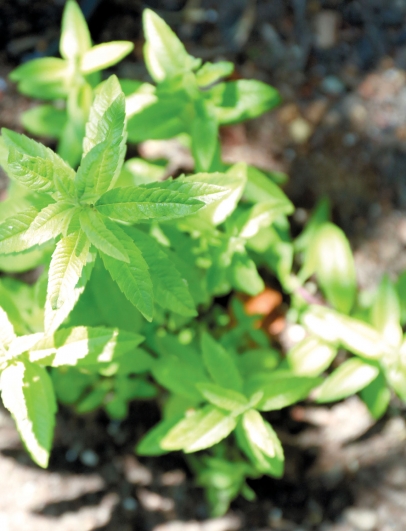As Easy as One-Two-Tea
TRANSFORM GARDEN-FRESH HERBS INTO EASY AND ELEGANT REFRESHMENT
According to the Merriam-Webster dictionary, “tea” has many different meanings.
In the United States, we use the term “tea” interchangeably to mean both caffeinated tea (including black and green tea) and non-caffeinated infusions made using herbs and certain types of flowers. In Europe and most of the rest of the world, the latter are more commonly referred to as “tisanes.”
In addition to being imbibed for the pure pleasure of it, herbal teas or tisanes are used in many cultures for medicinal purposes. In hot climates, such as the Middle East, drinking hot tea, like eating spicy foods, is common practice to assist the body in producing sweat, nature’s coolant and detoxifier. Even without the caffeine lift offered by black or green tea, brewing a herbal tisane can offer its own powerful “pick-me-up” via the body’s olfactory sense.
The name “tisane,” pronounced “ti-ZAN,” “tee-ZANE” or “tee-ZAHN,” depending on what part of the world you are in, might sound fancier than “tea,” but tisanes are very easy to make. Simply choose which herbs, roots, spices, flowers, leaves or fruit you want to use, then steep them in boiling water to extract their flavors. Besides being delicious, tisanes also deliver the nutritional benefits from the plants in an easily digestible form.
Harvesting herbs from your garden to make tisanes is a great way to get kids involved in gardening, harvesting and “cooking.” In fact, it was a simple tisane made with herbs grown on site that Alice Waters served at the first Edible School Yard gathering for parents and teachers in Berkeley. Not an elaborately crafted meal incorporating lots of ingredients grown in the school garden—a simply delicious tisane. Tisanes are also standard post-meal fare at Waters’ iconic Chez Panisse.
It does not take a whole lot of land to grow plenty of potential ingredients for tisanes. Even a pot or a window box full can pack a lot of punch. My little backyard garden box is bursting with green things—parsley, thyme, oregano, mint and lemon verbena—that make delicious tisanes.
My personal favorite is lemon verbena, a hardy perennial shrub that can live in cool temperatures. [Although it may lose its leaves when temperatures fall below freezing, lemon verbena’s beautiful green leaves always return in spring.] A native of western South America, lemon verbena was brought back to Europe by early explorers and cultivated for its oil that has antioxidant and anti-inflammatory properties. Its aroma is divine, right up there with the smells of summers past like lilac flowers and fresh-cut grass.







